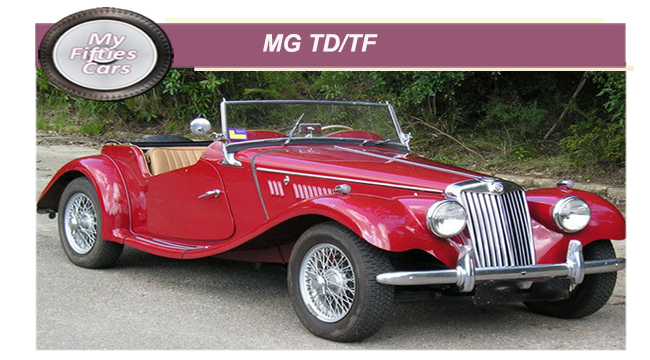
Not so many cars capture the mood of the UK car industry of the early Fifties than the TD/TFs from MG. Not that these cars brought anything new in the way of auto design, with the earliest Midgets launched in 1936.
Up until 1950, the T-Series car remained with their Thirties layout.
However, sensing that they had rested on their laurels possibly a little too long, MG development team pulled their TD version out of the bag,
A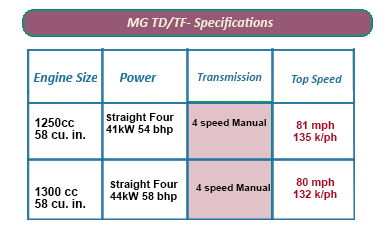 lthough MG followed an almost identical design philosophy with the TD as previous Midgets, even sticking with a traditional wooden-framed body tub.
lthough MG followed an almost identical design philosophy with the TD as previous Midgets, even sticking with a traditional wooden-framed body tub.
The TD’s exterior body shape was dominated by its flowing front wings, separate freestanding headlamps, and an upright radiator grille, which had become a trademark for the series, the TD was almost completely updated.
A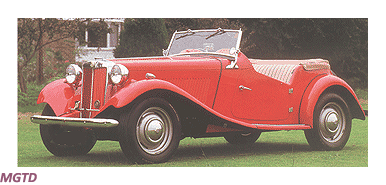 although the original prototypes were tested using an albeit a much-changed version of the MG YA chassis when the car finally went into production, it had been fitted with a re-engineered frame, which was considerably stiffer than the latest Midget’s predecessors.
although the original prototypes were tested using an albeit a much-changed version of the MG YA chassis when the car finally went into production, it had been fitted with a re-engineered frame, which was considerably stiffer than the latest Midget’s predecessors.
 The MG-TD also came with rack-and-pinion steering and coil spring independent front suspension.
The MG-TD also came with rack-and-pinion steering and coil spring independent front suspension.
A fundamental design change made by MG with the TD was to reduce the car’s wheel dimension of 19 inches to 15 inches while increasing its tire width to 5.50 inches.
These changes were designed to cause the MG-TD to provide a significantly superior ride over the MG-TC, the model which it was due to replace, which had often been criticised for its “ rough ride.”.
![]()
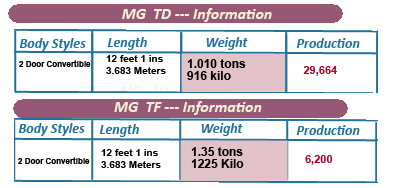 The MG TD still belonged to the same archetype of prewar 'British-look' sports cars, while its running boards were tweaked a little further forward as a civilising gesture.
The MG TD still belonged to the same archetype of prewar 'British-look' sports cars, while its running boards were tweaked a little further forward as a civilising gesture.
Other updates, such the bumpers, (newly mandatory in the US, MG's prime market at the time) all demonstrated MG's awareness of its customers' developing stylistic sophistication and demand for comfort.
Within a few months, the MG TD Mk II included yet more improvements, although MG ensured that the essential driving experience remained the same.
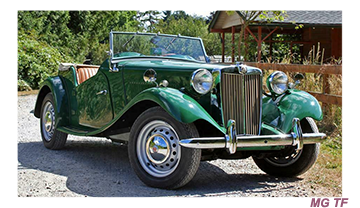 What MG had succeeded in achieving was to develop a new type of generation of sports car while retaining all of its “ pre-war” looks, although the car was wider and sat lower on the road than before, although built on the same sort of rudimentary but charming engineering principles.
What MG had succeeded in achieving was to develop a new type of generation of sports car while retaining all of its “ pre-war” looks, although the car was wider and sat lower on the road than before, although built on the same sort of rudimentary but charming engineering principles.
Eventually, a number of new and more modern looking sports cars appeared, in particular, the Triumph TR2 and the 100 from Austin-Healey 100.
 Despite the competition, the TD remained at the pinnacle as Britain's best selling and well-loved sports car.
Despite the competition, the TD remained at the pinnacle as Britain's best selling and well-loved sports car.
History, and statistics, have since shown that the powers that be at MG had probably made some form of marketing blunder, when, with sales figures flagging, but far from dramatically, they released a face-lifted version of the TD, (the TF) which, at least in the eyes of the motoring media, lacked some of the “olde worlde” charms of the TD.
![]()
In fact, if ever there was a car which introduced American drivers to the British sports car, it was the MG TD. Earlier T-Series cars had reached the USA in limited numbers, but it was the TD — the first MG sports car to have a left-hand-drive option, and the first to have independent front suspension — that converted them.
Of a total production of nearly 30,000, by the time they switched to the TF version in 1953, MG had sold more than 23,000 cars in North America.
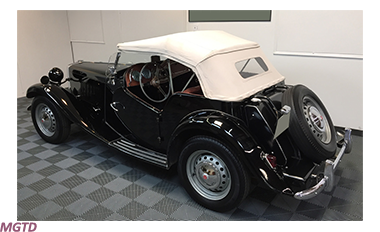 In any event, the arrival of the TF had little on sales of the much-loved Sportster, which continued to be a steady seller, especially in the USA,
In any event, the arrival of the TF had little on sales of the much-loved Sportster, which continued to be a steady seller, especially in the USA,
 The traditions that dominate the evolution of MG sports cars include the company's reluctance to introduce radical new styling while its existing models still have a steady market. All kinds of technological developments might take place under the hood or in and around the chassis, but visible changes suggest annual tweaking rituals rather
The traditions that dominate the evolution of MG sports cars include the company's reluctance to introduce radical new styling while its existing models still have a steady market. All kinds of technological developments might take place under the hood or in and around the chassis, but visible changes suggest annual tweaking rituals rather
Production of the MG Midget TD/TF series finally came to an end in April of 1955 after 9,600 TFs had been manufactured, with this last of the “ olde worlde” Midgets superseded by the MGA.


